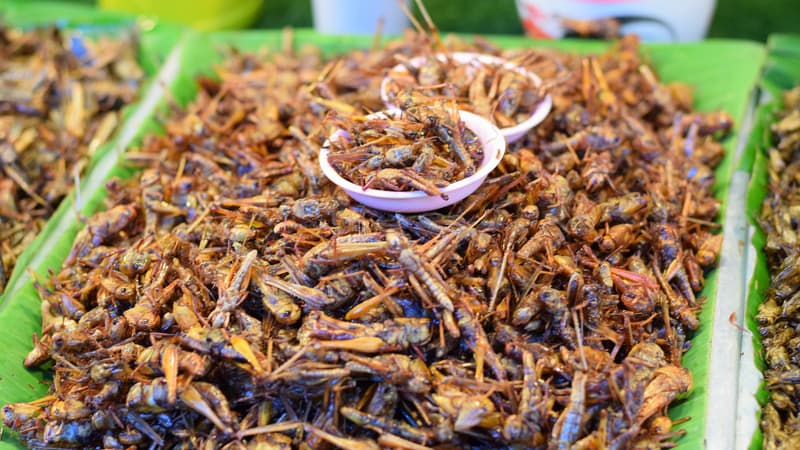Are we going to eat crickets without knowing it? The European Commission’s green light for a “cricket flour” has raised fears among some consumers that they might inadvertently consume it by eating products bought at the supermarket. But don’t worry: this cricket powder will not be added to breads or cookies without notifying the consumer.
• What has the European Commission authorized?
Eating crickets is not new in Europe: in February 2022, the European Commission had already given the green light to the commercialization of domestic crickets (from its own name purchased domesticus) in dried, frozen or powdered form for human consumption. What has changed in January 2023 is that it is also possible to market cricket powder in defatted (i.e. reduced-fat) form.
Brussels has approved the application submitted by the Vietnamese company Criquet One, which will be the only company for the moment capable of marketing this defatted “cricket flour”.
• In which products can it be used?
This powder can be used in the manufacture of food products. The European authorization cites in particular breads, cookies, cereal bars, sauces, pizzas, meat substitutes, soups or even chocolate candies. But don’t expect to see this new ingredient flood everywhere: it is still an expensive ingredient and, above all, not very popular among European consumers. The use of “cricket flour” will be very marginal in the food industry.
• Is it a dangerous ingredient?
“Cricket food” is not a problem for human consumption. In its scientific opinion, the European Food Safety Authority (EFSA) declared that defatted cricket powder did not present any danger. However, the EFSA clarified that its consumption could potentially cause allergic reactions in people allergic to crustaceans, molluscs and dust mites, and recommended further research on the subject.
• Are we going to eat crickets without knowing it?
Not at all: European standards are very strict when it comes to food. The presence of cricket powder must be indicated in the list of ingredients. As indicated by the European Commission, the mention “partially defatted powder of Acheta domesticus (domestic crickets)” should be present on the labeling of food products that contain it, as well as its allergenic potential.
Brussels has also set the maximum doses for the use of this new ingredient. For example, there can be no more than 3 grams of cricket powder per 100 grams in cereal bars or no more than 1.5 grams in biscuits.
• Is this the first insect allowed?
It is not the first insect to gain European approval for human consumption. The European Commission has already authorized the mealworm and the migratory locust. Above all, in practice, the production of insects for human consumption remains marginal. It is above all on the side of animal feed that insect farms are looking. Transformed into nutrients, they are intended for feeding pets or aquaculture.
Source: BFM TV


